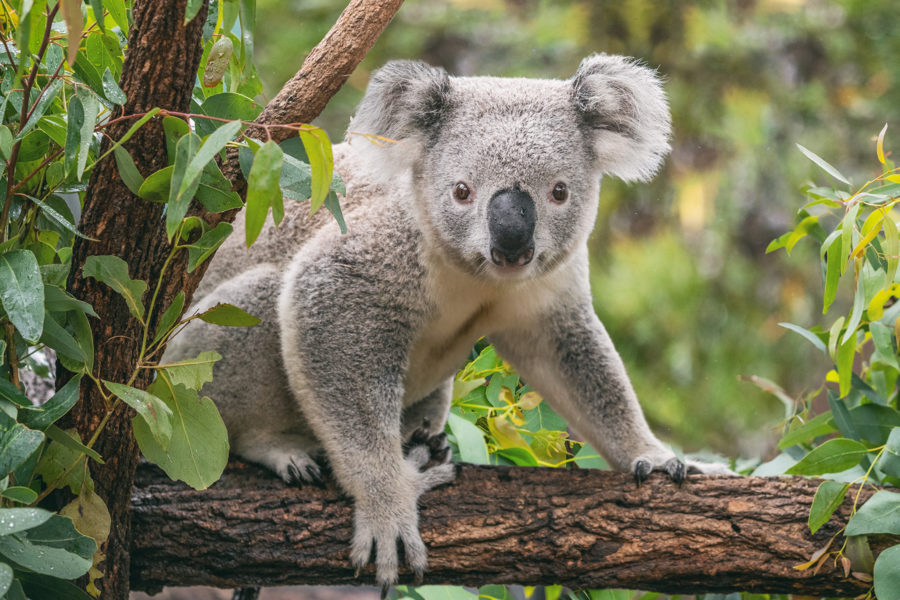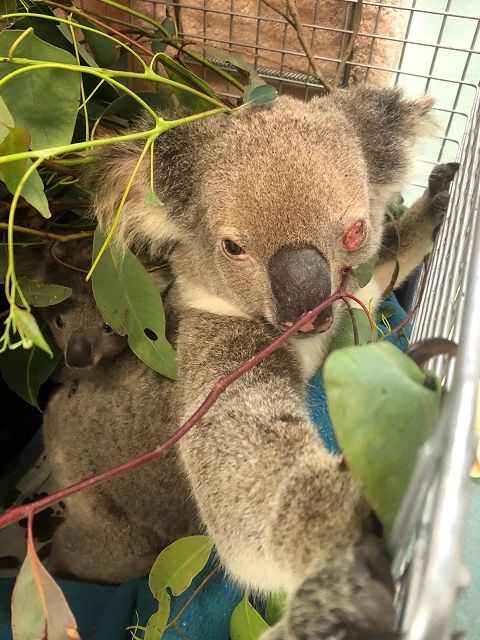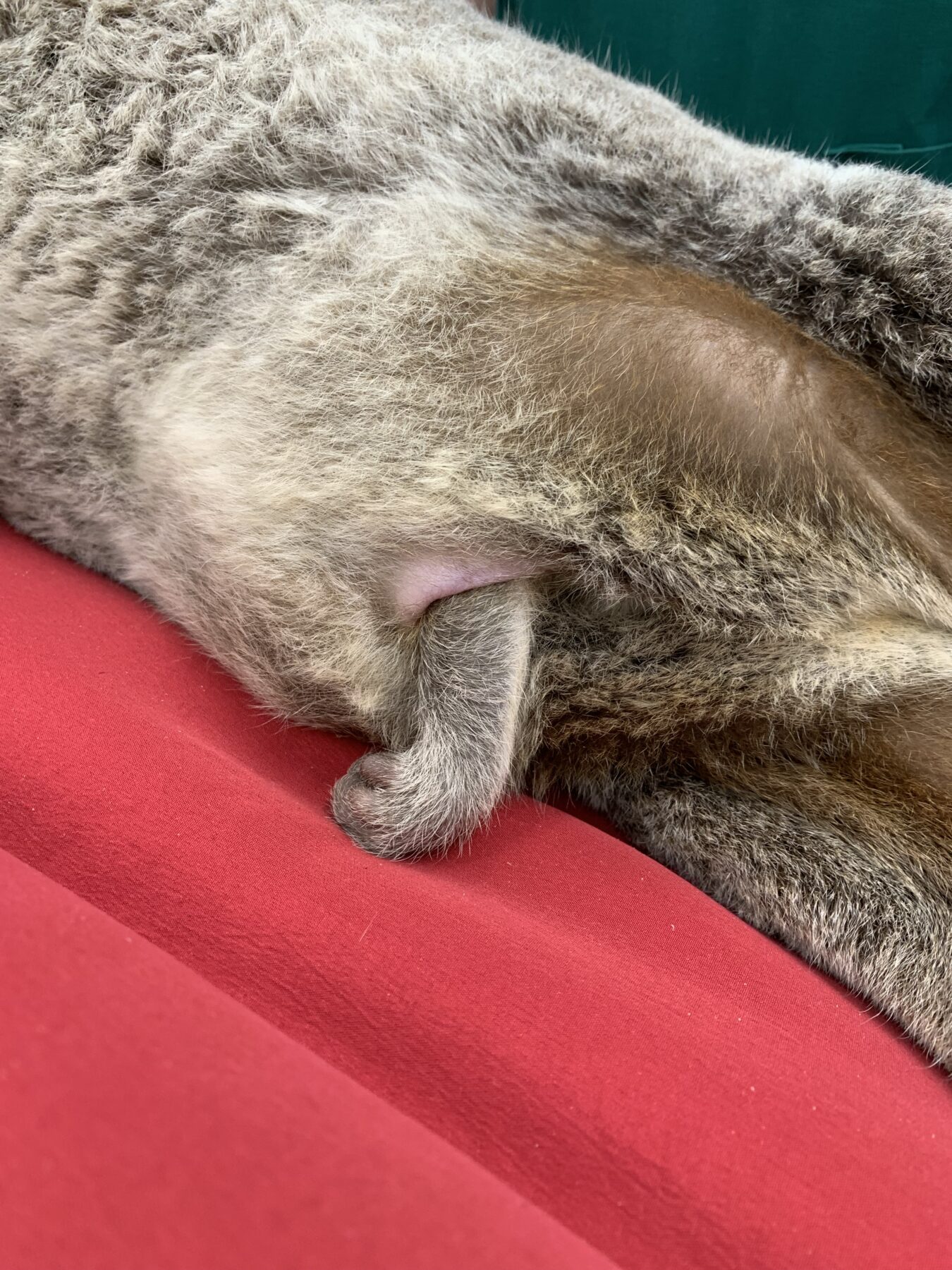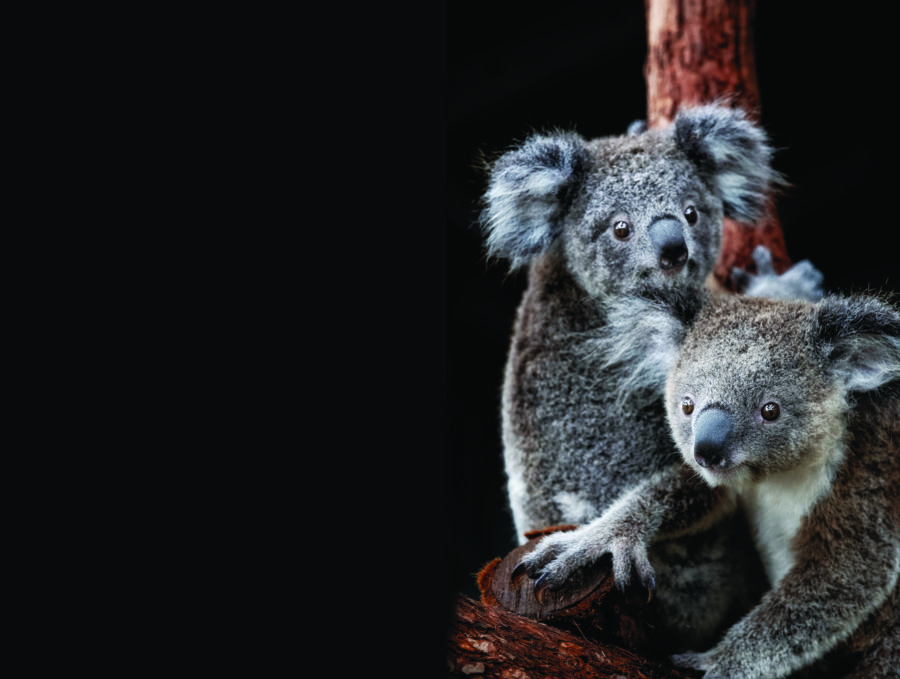Koala chlamydia vaccine exceeds expectations of researchers

Chlamydial disease is a major threat to Australia’s endangered east coast koalas and can leave them blind, infertile and plagued by painful urinary tract infections.
Two years ago, researchers from the Queensland University of Technology began testing a vaccine on an isolated and shrinking wild population in the Gold Coast hinterland.
At the time the disease was rife, but the population now has a new lease on life after efforts to vaccinate 10 to 20 per cent of young wild koalas.
Modelling had suggested that level of coverage should have a significant impact and reduce overall instances of chlamydia and boost breeding capacity.
Two years into the five-year treat-and-track study, there’s every indication that’s happening.
QUT Professor Ken Beagley, who led the development of the vaccine, said 250 animals had been vaccinated so far, with 25 joeys delivered to healthy females.
There’s even a grandkid, with the daughter of a vaccinated female producing a healthy joey of her own.
“The results from this unique study are to date outstanding and have exceeded my expectations,” said Prof Beagley, who has put off retirement to see the project through.
“Importantly, all females and the joeys were chlamydia-negative at 12 months, with some still negative at 18 and 24 months.”

What is koala chlamydia?
Koala chlamydia is a bacterial infection and is one of the leading causes of death for Australian koalas. If left untreated, chlamydia can cause infertility and permanent blindness.
Chlamydia can present in koalas in two ways. The classical presentation is severe conjunctivitis which is spread through close contact and in advanced cases can cause blindness. The other form of chlamydia is a sexually transmitted infection that can cause fatal urinary and reproductive tract disease. Some koalas can have a reproductive chlamydial infection that shows no obvious clinical signs but does prevent them from breeding.
Chlamydia is the most common and well-known disease of wild koalas, estimated to be found in up to 48% of the population, and in some parts of Australia, infection rates are as high as 90%.
-courtesy Currumbin Wildlife Hospital
With three years of the study to go, the next steps involve securing extra funding and registering the vaccine.
“It is my passion. It is why I have not gone into full retirement,” Prof Beagley said.
“The number of joeys we have had and the fact that all of them are still negative for chlamydial disease is the most exciting outcome to date.”
It’s estimated chlamydia is present in about half of the nation’s koala population, with the infection rate as high as 90 per cent in some places.
It is a leading cause of death and compounds the effects of climate change and habitat loss – a terrible triple whammy that’s seen koalas listed as endangered in Queensland, NSW and the ACT.




